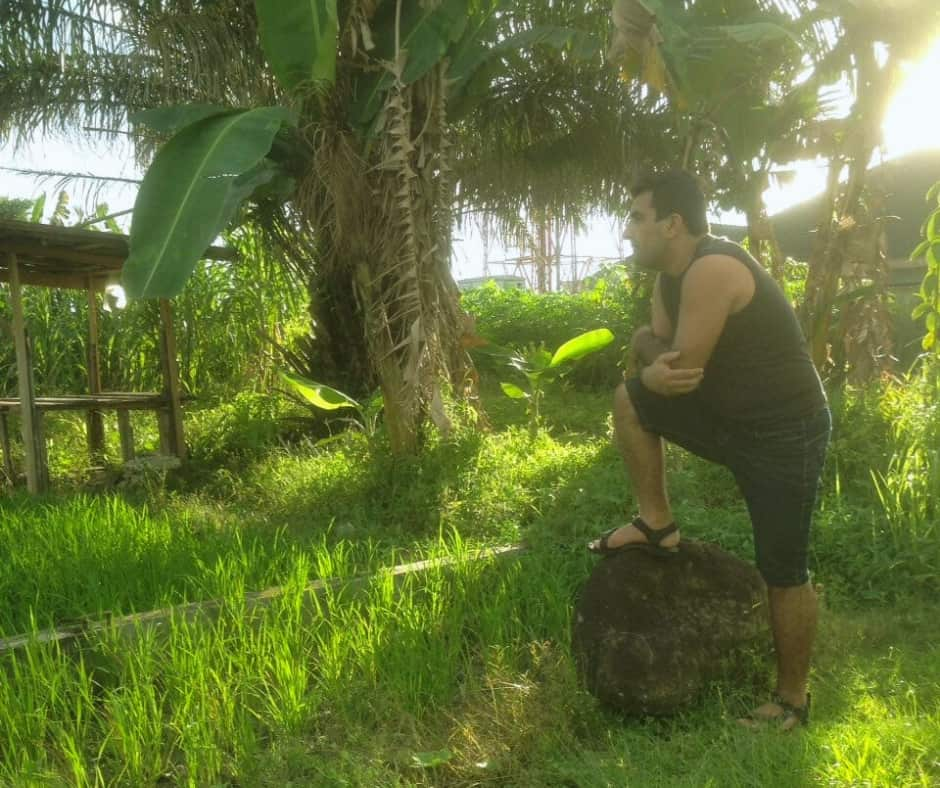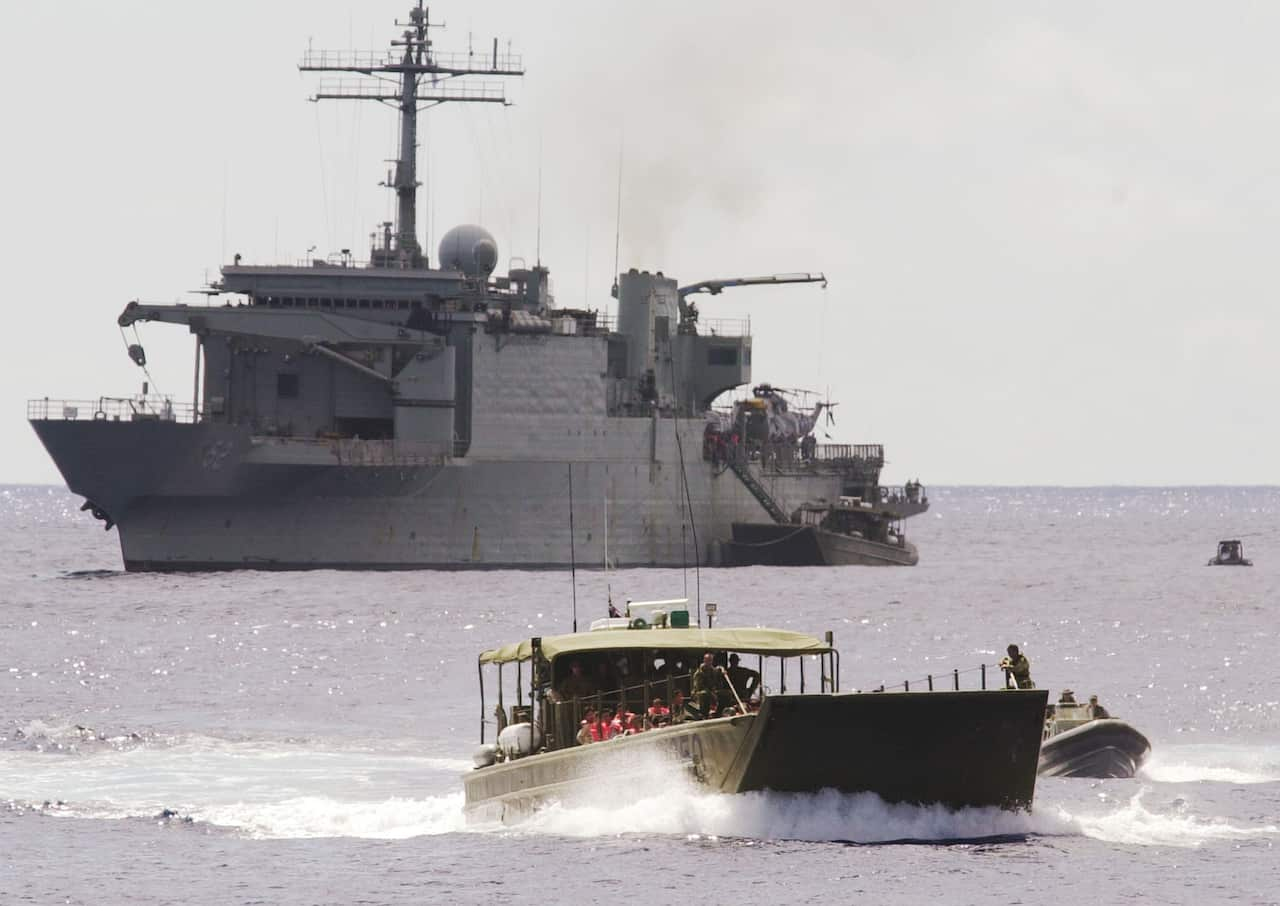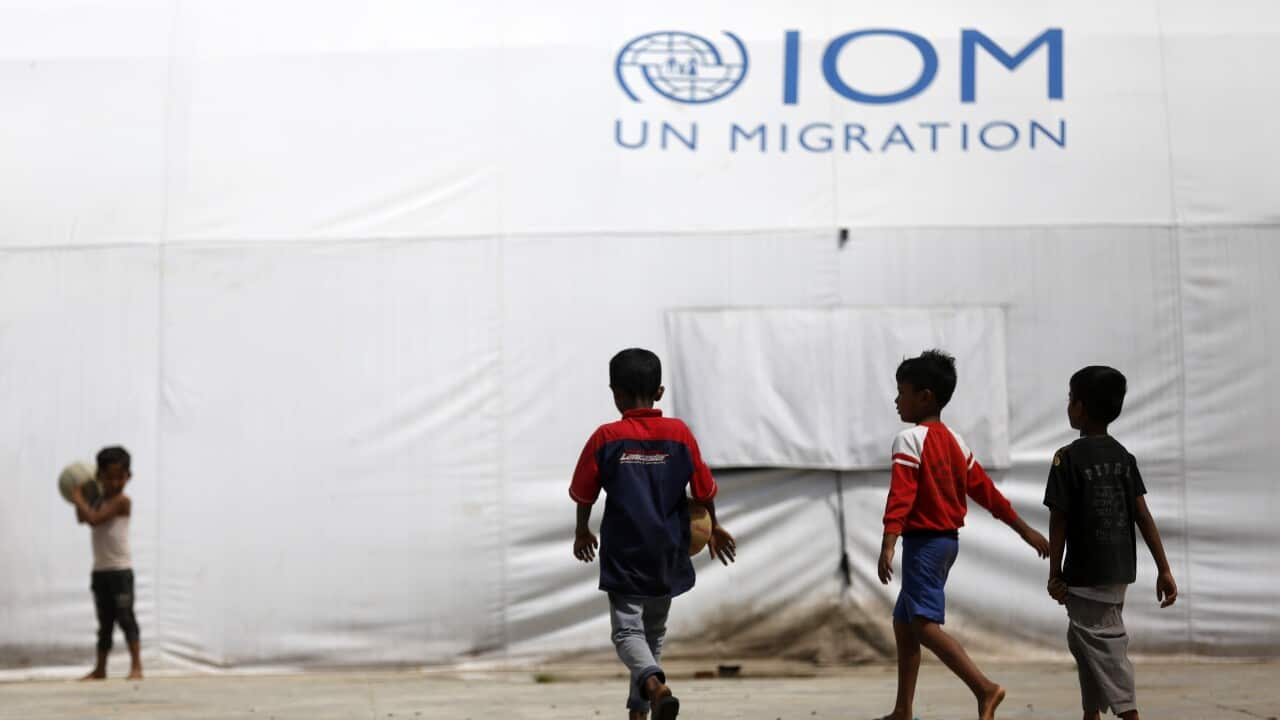Key Points
- The Trump administration issued an order on 20 January to suspend the US Refugee Admissions Program.
- In 2016, the United States agreed to resettle up to 1,250 refugees from PNG and Nauru processing centres.
- The freeze on the refugee program has also impacted asylum seekers who arrived in Australia by boat.
Mohammad Mehdipour remembers the moment he first set foot on American soil, leaving behind 12 years of limbo he describes as a “green hell”.
“When I exited the airport and took a breath, the vapour that escaped me made me feel at home. My lungs were filled with the cool air … It was like a sense of freedom was accompanying it,” Mehdipour recalls.
“I was not dreaming that the nightmare was over … I was free from Indonesia’s green hell.”
The Iranian man was part of a group of 14,000 refugees and asylum seekers in Indonesia waiting to be resettled in countries like Australia.
Mehdi Mehdipour describes his refugee camp in Indonesia as a “green hell”. Credit: Supplied
Many of these refugees travelled to Indonesia in 2013 intending to reach Australia but, with the start of, found themselves stranded in refugee camps in the neighbouring country.
When, in 2014, the , Mehdipour and others had to find another country to call home.
‘Does God not like us?’
Many of the refugees have endured hardship in the process.
Reza* remembers with mixed emotions the moment a car arrived at the camp to take Mehdipour to the airport.
“Obviously, when you see your friends are leaving [Indonesia], you feel happy for them … But then, you feel bad when you think you are not going with them,” he says.
Families only watch those leaving and cry.
Reza, a refugee stranded in Indonesia
He and his family left Iran in 2013 and went to Indonesia in an attempt to seek asylum in Australia. His boat never reached the shores of Australia, and he started his life in a refugee camp in North Sumatra.
“There was a lot of pressure from the Iranian regime on us, it was only because we wanted freedom that we took the risk,” he says.
“We only demand the freedom to live.”
He tried to pursue resettlement in other countries through the UNHCR after they were rejected to come to Australia.
After 12 years, he received a call in early 2025 telling him to be prepared for a flight in February.
But the good news was short-lived as the Trump administration issued an order on 20 January to suspend the US Refugee Admissions Program (USRAP).
Shortly after that, Reza was told that his flight was cancelled.
“When we heard about the Trump order, a dead silence fell over our life. They showed us freedom, and as soon as we wanted to taste it, they took it away from us,” he says.
“My kid asked me, ‘does God not like us?'”
‘Australia has already done that’
The Trump administration’s freeze on the refugee program has impacted asylum seekers who arrived in Australia by boat over a decade ago and were waiting to be resettled in the US.
According to the Department of Home Affairs, “less than 30 transitory individuals continue to pursue resettlement in the United States (US) through the US resettlement arrangement”.
“The Department awaits further advice from the US Government regarding its ongoing operation of the USRAP and is hopeful that processing will resume for cases in the US resettlement arrangement,” a Home Affairs spokesperson says.
In 2016, the United States agreed to resettle up to 1,250 refugees from Papua New Guinea and Nauru processing centres.
The refugees had previously tried to reach Australia by boat but were intercepted and sent to Australian-led centres.
Jana Favero, Deputy CEO at the Asylum Seeker Resource Centre, says the Australian government “should be, on the strongest terms, urging the Trump government to reinstate their refugee program and to continue to resettle refugees”.
“We’ve got global displacement at record levels, and we can’t have one of the wealthiest countries in the world turn its back on refugees,” she explains.
In 2016, the United States agreed to resettle up to 1250 refugees from Papua New Guinea and Nauru processing centres. Source: AP, AAP / AP
“What Trump is doing by putting a ban on or stopping refugees coming from certain countries, Australia (already did) that in 2014.
“If you are not offering safe passage to people, they will do whatever they can to get somewhere safe, which includes putting their lives at risk.”
‘Experiencing a slow death’
Nikki* is another refugee in Indonesia who was turned away by Australia over a decade ago and has now been rejected by the Trump administration.
He left Iran in 2013 to practise his religious beliefs freely.
“I only wanted to leave. I didn’t care about living in Europe or Australia. (I) Just wanted to save my life and run away,” he explains.
Nikki went to Indonesia intending to reach Australia by boat, but he was intercepted before departing the country.
“I imagined it would be the end of all the sadness, but (instead) it was the beginning of all the difficulties,” he says.
“I remember thinking in 48 hours, I would be somewhere on this Earth where I could practise my religion freely. But those were actually the most horrifying hours I have experienced.”
Since then, he has lived for 12 years in one of Indonesia’s 13 refugee camps in North Sumatra.
As Indonesia is not a party to the , asylum seekers and refugees are not allowed to work, are ineligible for social benefits from the government and cannot remain long-term in Indonesia.
Living in limbo presents daily issues.
“Every day, we are waiting for an update, 13 years of waiting. We are experiencing a slow death,” Nikki says.
“We have lost our years, we are facing health issues, and we face thousands of challenges every day.”
According to a report by UNSW’s Kaldor Centre for International Refugee Law, for these refugees “there is no clear way to leave. Returning to the country of origin is impossible; (the chance of) third-country resettlement is remote; and surviving in Indonesia is very difficult”.
“The conditions are really, really dire for the 14,000 refugees who are waiting in Indonesia, which is what makes [Australia’s] decisions to stop resettling refugees from Indonesia even more cruel,” Favero says.
“Australia has a really critical role in our region to provide safety to refugees so that they can rebuild their lives.
“One of the first steps has to be by lifting the ban on resettling refugees from Indonesia.”
Leaving Indonesia just before the US policy change, Mehdipour still “can’t enjoy” his new life in the US.
“Deep down, I don’t feel right,” he says.
“I feel guilty. While I’m walking in the snow here, some of my friends who had the right to resettle are thinking about how to fix their air conditioner in that hot weather.”
*Name withheld to protect identity


